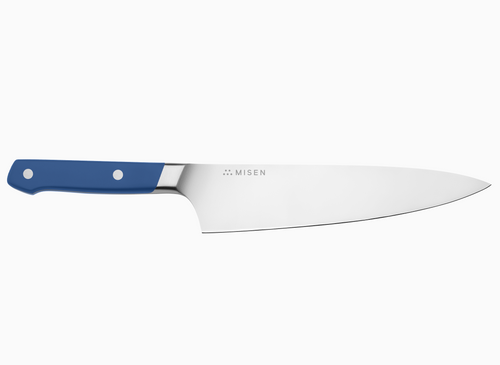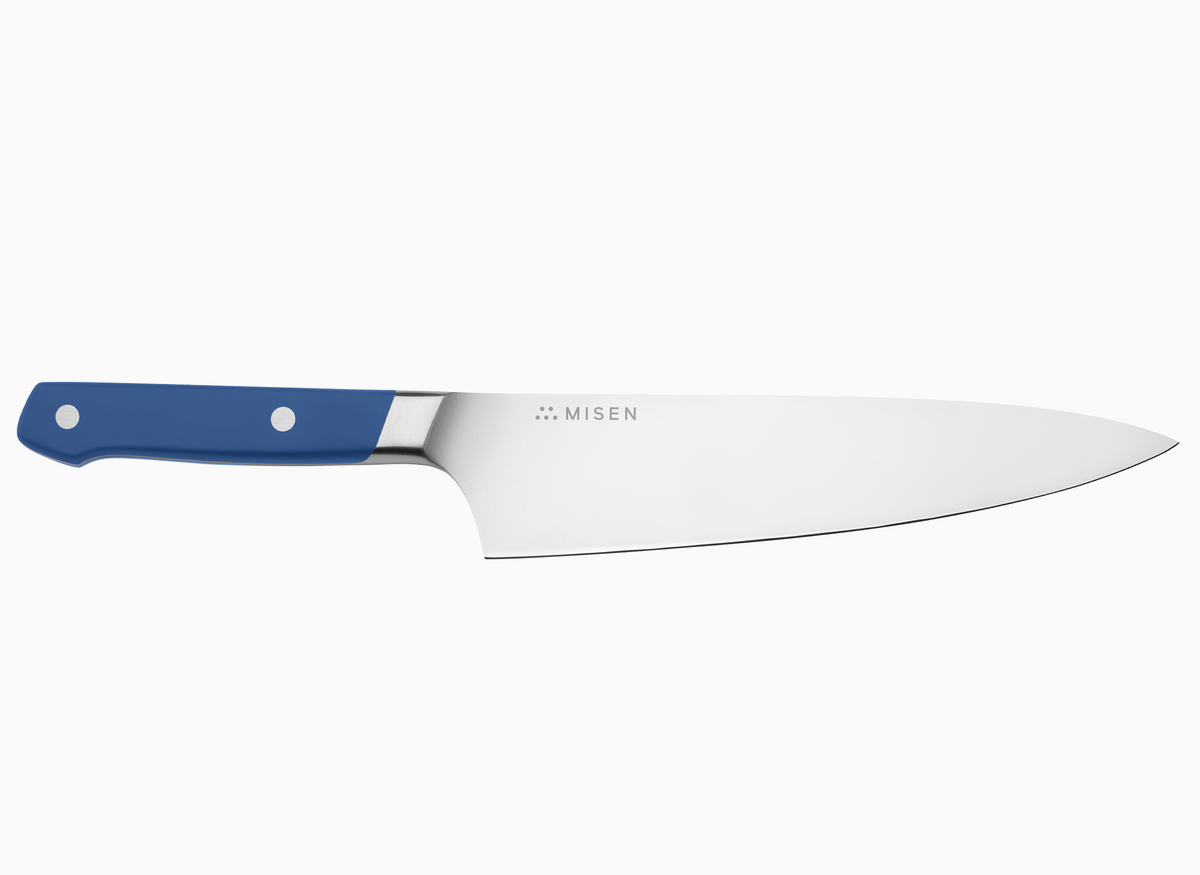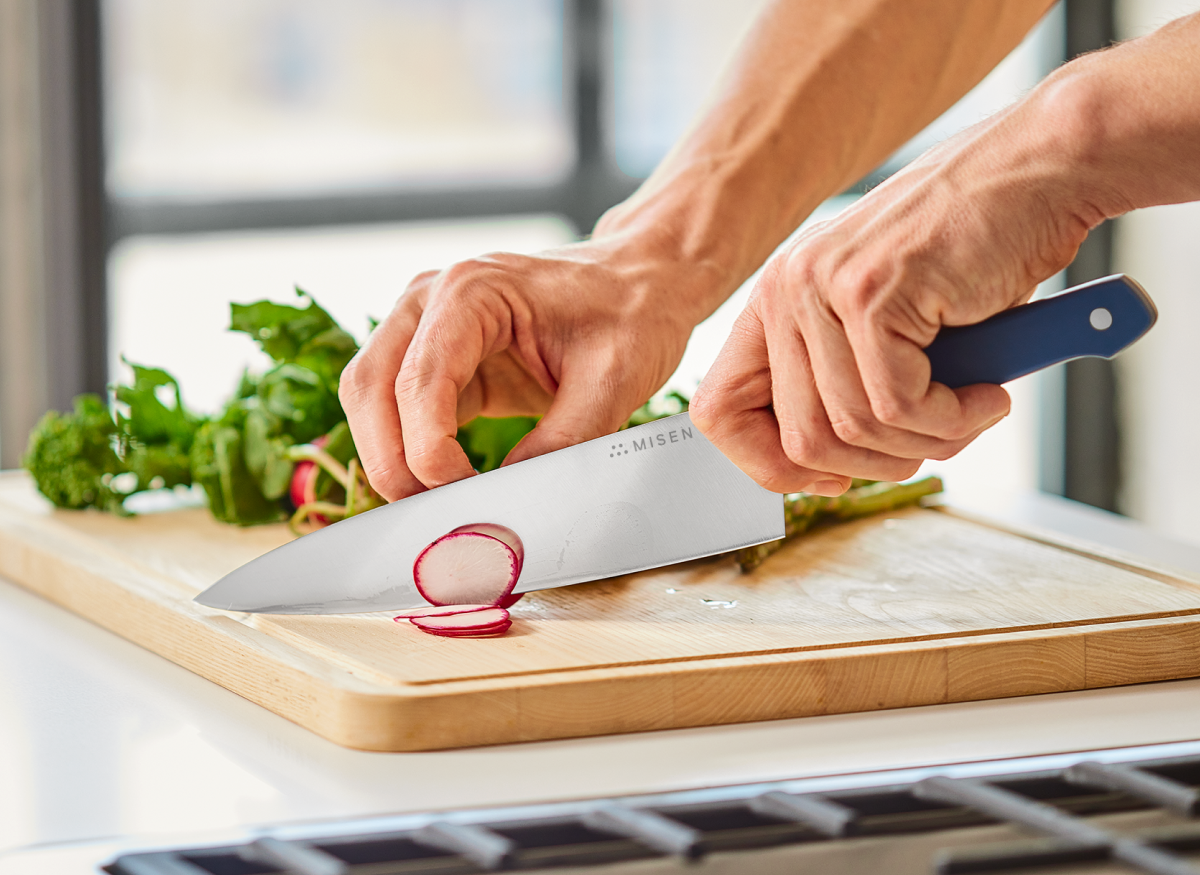Why Paring Knives Are Important in the Kitchen
 Thanks to their small size, paring knives perform the functions most larger knives can’t.
Thanks to their small size, paring knives perform the functions most larger knives can’t.
- Paring knife blades generally come in three styles: classic, sheep’s foot, and bird’s beak.
- The main purposes of a paring knife are doing precise detail work and getting into small spaces where larger knives can't go.
- Aside from peeling, paring knives can be used to devein shrimp, deseed produce, slice cheese, and mince small ingredients.
Just like to-do lists, bigger is not always better when it comes to kitchen knives, and added size doesn’t always translate into added functionality. As long as a blade is long enough to make a clean cut, then bigger cutlery often just means, well, bigger cutlery (and additional storage space).
A paring knife is probably the smallest kitchen knife you’ll come across. But don’t let its diminutive size fool you — a paring knife plays many important roles in the kitchen and is in fact one of the most recommended pieces of cutlery for any cook (second only to a chef’s knife).
What Is a Paring Knife?
A paring knife is best described by its short size. The typical blade length is between 2.5 to 4 inches, with the entire knife under 10 inches.
This small size fits comfortably in your hand, making it a perfect utility knife for detailed work, poking into hard-to-reach areas, and of course, paring or peeling delicate ingredients. While a peeler can also be used to remove skin from say, an apple or pear, it would all but puree a ripe tomato, peach, or grape.
A paring knife, however, can handle these tasks with precision. The many other uses for a paring knife are to devein shrimp, mince shallots, scrape out seeds, slice cheese or sausages, and segment citrus. Basically, if a chef’s knife is too big for the job, reach for your paring knife.
3 Paring Knife Blade Styles
 The Misen paring knife comes in the versatile, classic blade style.
The Misen paring knife comes in the versatile, classic blade style.
Aside from being short, paring knives come in three basic blade styles, each with their own distinct shape and corresponding function.
1. Classic
The classic style, or spear point paring knife, features a slightly curved cutting edge with a pointed tip. This is the shape of most chef’s knives. Classic paring knives offer the most all-around use, as the sharp blade can cut with ease and the pointed tip can help test if a dish has finished cooking.
For classic paring knives, look to Calphalon, MAC Knife, or our very own Misen collection, which includes a popular paring knife, with a 3.1-inch blade.
2. Sheep’s Foot
The second most popular paring knife style is the sheep’s foot, which is a flat bottom blade. The top of the blade is also mostly flat, with a gentle slope toward the tip, similar to the shape of a santoku knife.
This flatness is preferable for repeated mincing and slicing, as the entire sharp edge of the blade makes contact with the cutting board. With a knife this size, you won’t use the back-and-forth rocking motion that you would with a chef’s knife. Brands that offer paring knives with a sheep's foot silhouette include Kuhn Rikon, Wüsthof, and Zwilling J.A. Henckels.
3. Bird’s Beak
A bird’s beak, also known as a trimming or tourné knife, is the third of the paring styles and has a concave, sickle-like silhouette. Although not as common as the others, a bird’s beak does offer its own unique use. Its sharp curve is an exact fit for similarly curved ingredients — potatoes, melons, grapefruit, etc. — while its exaggerated tip is perfect for hulling strawberries or carving out avocado pits. You can find bird's beak paring knives from Shun and Victorinox Swiss Army.
Basic Paring Knife Features
Paring knives are usually made of stainless steel, high-carbon steel, and ceramic. Given their utilitarian functions, however, sturdy stainless steel will perform better than a ceramic paring knives, which can be brittle and irreparable if even slightly damaged.
Stainless steel is not just the most durable of the three materials, it’s also resistant to rust and corrosion. Their “stainless” nature (thanks to the addition of chromium) makes these knives less prone to discoloration, so they’ll require much less maintenance. Most well-made paring knives also feature a full tang — with the steel running the entire length of the knife, including the handle — which makes them even more durable.
The handle is another part to consider in a paring knife. Although an important feature in all knives, the handle of a paring knife is a big consideration — it’s literally half of the knife. As such, you want one with a balanced weight and comfortable, ergonomic grip that allows you to perform all kinds of cutting with ease.
Of course, the best paring knife feature is that it comes at a very affordable price. A good paring knife should cost about $25-40, and with proper use and care, will last you many years.
Using a Paring Knife
 Fitting easily into your hand, paring knives can be used for a variety of cutting techniques.
Fitting easily into your hand, paring knives can be used for a variety of cutting techniques.
Paring knives are comparatively small, which allows for a variety of different grips and cutting methods. In addition to standard slicing on a cutting board, you can also cut into items by directly taking the knife to the object (like how you would peel an apple).
To devein shrimp, for example, hold the handle of your paring knife in your dominant hand (the same way you would hold a piece of chalk) and hold one peeled shrimp in your nondominant hand with the shrimp spine facing outward. Make a shallow cut along the shrimp spine to expose the dark vein, and use the tip of the blade to gently lift the vein out.
To segment a citrus, on the other hand, first slice off the ends, rind, and pith (place the citrus on a cutting board for this step). Then, hold the citrus gently but firmly in your nondominant hand and insert the paring knife between the flesh and clear membrane, making sure not to actually cut the membrane. Make your way around the citrus until all the segments have been cut. Use the length of the blade to gently pry each segment away from the membrane for a perfect ready-to-eat wedge.
Storing a Paring Knife
Small, but no less sharp than other cutlery, paring knives require unique storage. The quickest solution would be if you already use a magnetic knife strip or bar where the paring knife can easily stay. If you prefer using a drawer, opt for slide-in inserts that can be adjusted for size so bare knife blades aren’t jostling around in a drawer, or use a sheath or guard that can cover the blade before storing.
Cut Down to Size
Paring knives are small but stealthy kitchen tools. They can perform a range of tasks — peeling, deseeding, scoring, etc. — much better than a larger knife can. With so much functionality at such an affordable price, a paring knife is an essential tool to have at your fingertips.








